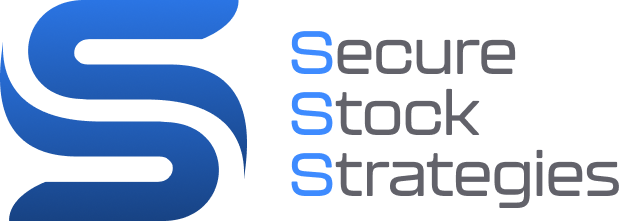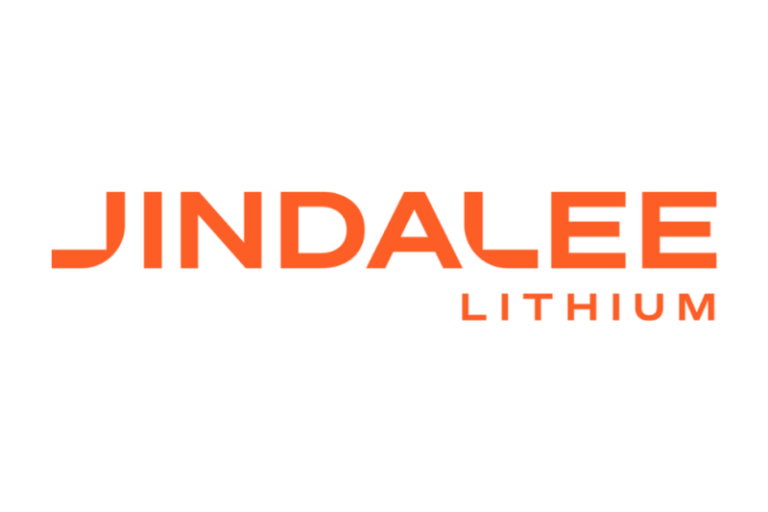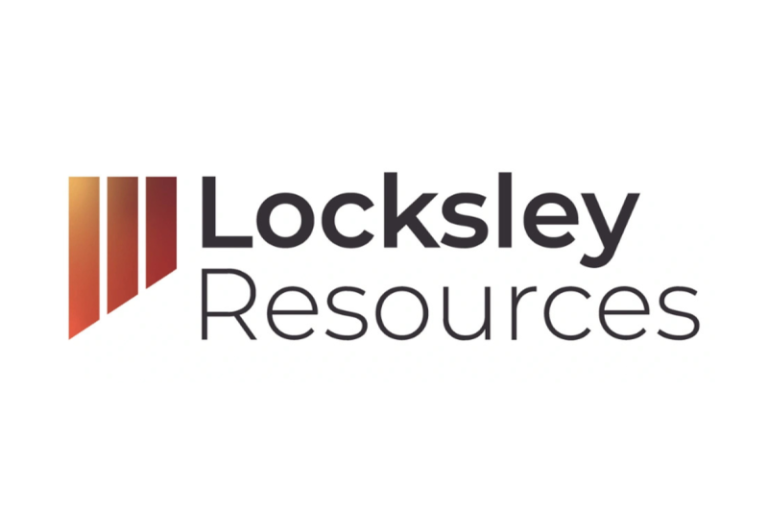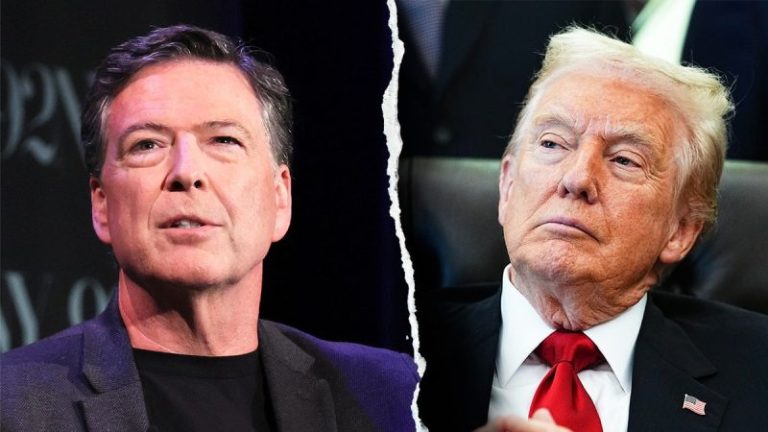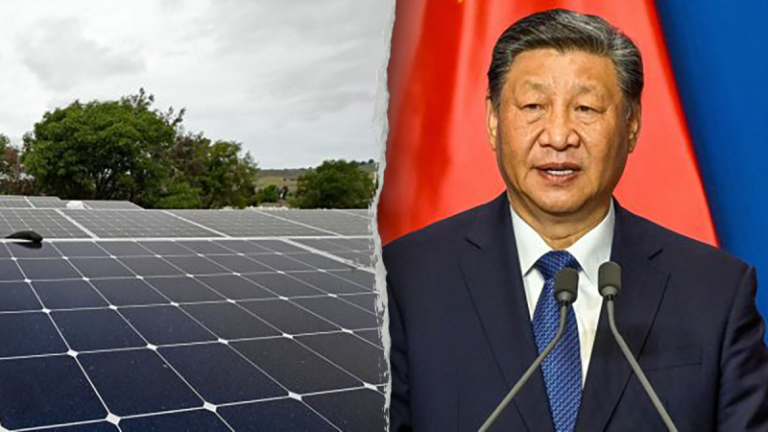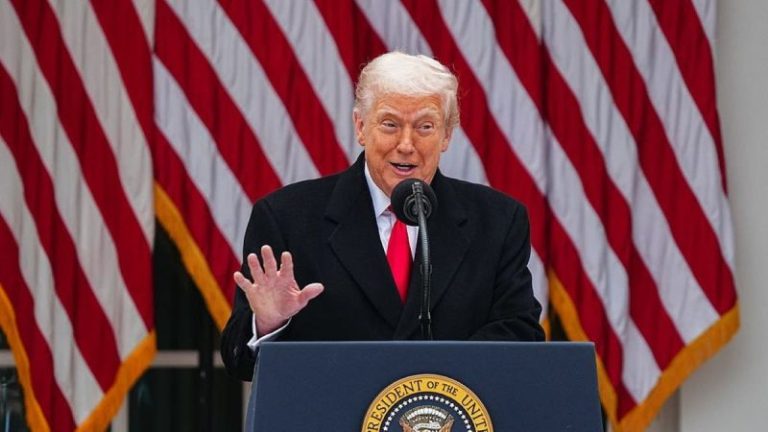A pair of major North American solar companies, including one touted by Senate Democrats in 2023, could face scrutiny over their ties to China.
While the feds have created barriers to Chinese firms flooding the solar market, many have found ways to localize operations in the U.S. or North America in a manner that allows for public investment and even deferential press coverage at times.
After then-President Joe Biden signed the Inflation Reduction Act, Senate Democrats praised the law for its substantive investments in ‘green’ energy, including solar. One company that received top billing was an Ontario-based firm that was founded by a Chinese entrepreneur and keeps much of its assets in China.
‘The Inflation Reduction Act is already paying huge dividends for the American people,’ blared a topline from Senate Democrats in 2023 after investments were being made in several companies.
The release cited a Reuters report that Canadian Solar – based in Guelph, Ontario, but founded by Qu Xiaohua and with its main operating arm listed on Shanghai’s SciTech board – committed to $250 million to a 5GW module facility in Texas after the IRA took effect.
Trina Solar North America president Steven Zhu boasted to China Daily, a Chinese state-run propaganda outlet, that the project represents ‘a significant investment in American manufacturing that will bolster the U.S. solar market in addition to positioning Texas as a leader in the transition to a sustainable future.’
Canadian Solar saw a 34% spike in its stock performance in the first half of 2022, according to a Benzinga analysis, which quoted company CEO Shawn Qu as saying he was ‘excited to see the [IRA] in the U.S. coming into effect.’ The report said ‘alternative energy companies’ like Canadian Solar stood to get a leg up thanks to about $370 billion in subsidies from the IRA.
A 2025 company filing with the Securities & Exchange Commission (SEC) referenced that due to the company’s business in China, the CCP ‘may intervene or influence the operations of our PRC subsidies at any time’ and that the firm is ‘exposed to legal and operational risks associated with having a significant portion of our manufacturing operations in China.’
The Canadian-based company with a large Chinese manufacturing footprint – praised by Democrats – extends China’s state-backed dominance, yet can still qualify for IRA tax incentives meant for American allies – something that Congress has been focused on.
Rep. John Moolenaar, R-Mich., chairman of the House Select Committee on the CCP, recently sounded the alarm on companies affiliated with China that receive or are qualified for federal subsidies – including through Biden’s IRA.
Moolenaar previously focused on another Chinese firm called Gotion, telling The Midwesterner there are ‘about 30 tax credits’ in the law ‘Biden calls his Inflation Reduction Act [that] will go to companies who are manufacturing, in some way, green energy.’
Moolenaar’s ‘No Gotion Act’ would ensure no subsidies go to firms based in officially designated politically-concerned countries like China, Russia, North Korea and Iran.
He also inserted language in the 2024 funding bill for the Department of Energy that would prohibit the agency from awarding contracts to companies tied to the CCP.
Fox News Digital reached out to Moolenaar for additional comment.
Rep. Carlos Gimenez, R-Fla., chair of the House Homeland Security Transportation Subcommittee, said at the time that the U.S. cannot continue ‘ceding dominance over our critical supply chains to our greatest geopolitical rival.’
Gimenez, who was born in communist Cuba and fled to the U.S. as a child, said Western nations were too slow to recognize threats from Huawei and TikTok, and that doing business in China ensures the CCP will get a cut; ‘a steep cost.’
Canadian Solar had about 12,000 employees in China at the beginning of the year with less than 6,000 in the rest of the world combined.
The Coalition for a Prosperous America raised red flags in a report last year on Chinese dominance in the solar industry, and the fact that they’re largely kept afloat by ‘massive financial support’ from the Chinese government – with reports citing as much as Y1B ($140M) in subsidies in recent times.
Those subsidies, CPA argued, threaten all solar firms in the West.
In 2024, Trina Solar, then a subsidiary of a Chinese solar giant by the same name, forged an agreement to sell its Texas-based manufacturing assets to another U.S.-based but Chinese-tied company, which is now known as T1 Energy. Trina Founder Gao Jifan is also a Chinese National People’s Congress delegate.
Gao has several links to CCP-connected organizations, as a profile on the Chinese-controlled search giant Baidu lists several curriculum vitae, including a former vice president of the China Chamber of Commerce for Import and Export of Machinery and Electronic Products – a semi-governmental trade association made up of representatives from several industrial and green-energy corporations like Huawei and Trina Solar.
More recently, in 2023, Gao was vice president of the China Association for the Promotion of Industry-Academic-Research Cooperation, a group under the auspices of the CCP’s Ministry of Science and Technology that connects research universities and manufacturing outfits in the fields of nanotechnology, material manufacturing and green energy.
On its homepage, T1 bills itself as ‘building domestic solar and battery supply chains to invigorate America with scalable, reliable, and low-cost energy,’ and saying that ‘America needs advanced manufacturing capacity to unlock our most scalable energy resources.’
Baidu noted Gao’s investment in a Texas solar module factory, saying he did so to ‘prevent the shipment of photovoltaic products from being blocked.’
T1 formed after FREYR Battery, a Norwegian firm, sold off its Texas assets to Trina Solar, which then rebranded the operation as T1 Energy after a restructuring – while FREYR focused on a separate Georgia operation.
T1 positions itself as an ‘integrated U.S. supply chain for solar and batteries,’ but remains largely dependent on Trina.
Earlier this month, T1 tweeted a video of robots at its Texas factory, saying that it produced 14MW of solar panels in one day and calling it ‘the path to American power.’
Trina Solar, the Chinese company, owns between 16-25% of T1, according to reports, allowing it a minimum of two board members. One member is reportedly a businessman who previously held a deputy directorship at the Chinese Development Bank, a financial powerhouse that helps fund China’s infamous Belt-and-Road Initiative.
A Caribbean-domiciled firm tied to the wife of a Trina executive also holds a stake in T1, potentially offering more Eastern control.
With T1 being a U.S. company eligible for tax credits under the IRA, the company benefits – but also its dependence on Chinese subsidy translates to a CCP-tied firm benefiting from American money.
In Canadian Solar’s case, critics have considered the branding and international dynamic to be geopolitical camouflage, suggesting to Western governments the company is one of their own.
The overall dynamic is one that again depicts China’s persistence in circumventing or manipulating U.S. defenses in various situations, this time in business and investments.
Chinese companies often collaborate on joint transpacific ventures and keep their equity stakes just under the proportion that triggers federal restrictions as a ‘Foreign Entity of Concern’ (FEOC).
Fox News Digital reached out to Trina Solar and Canadian Solar for comment.
Fox News Digital’s Cameron Cawthorne contributed to this report.
This post appeared first on FOX NEWS
